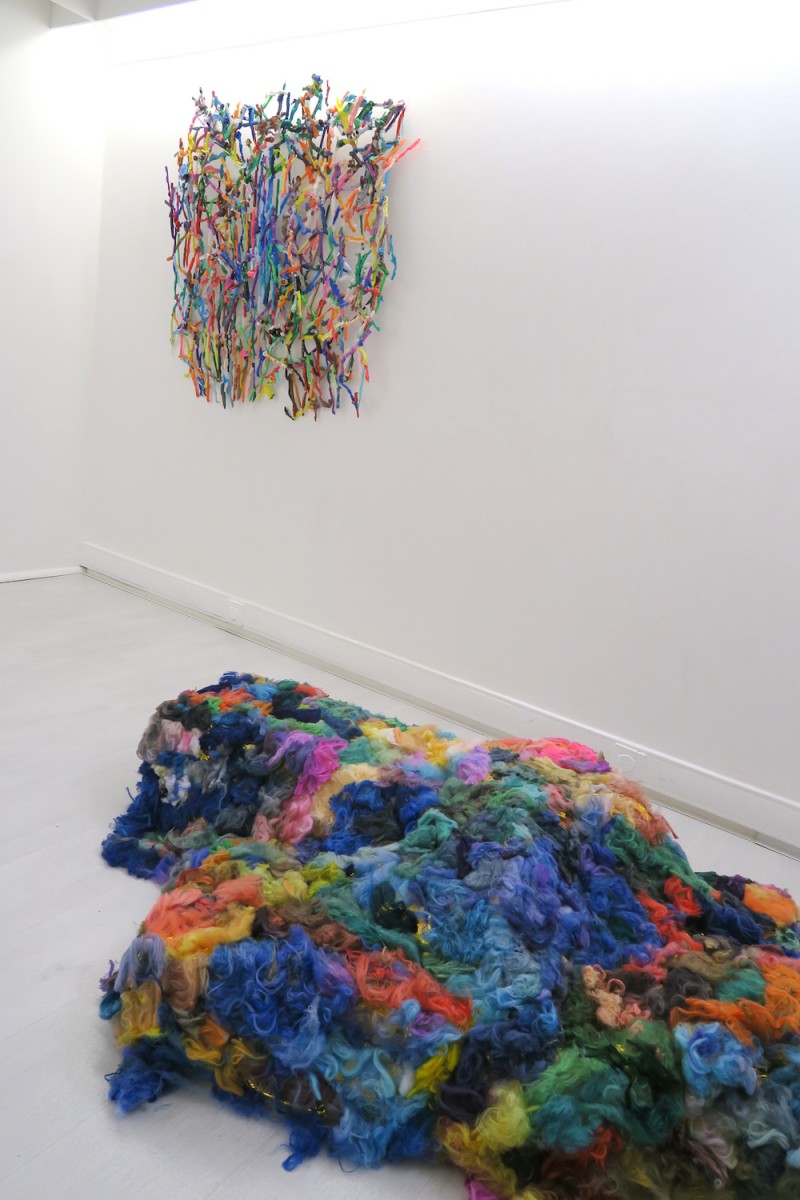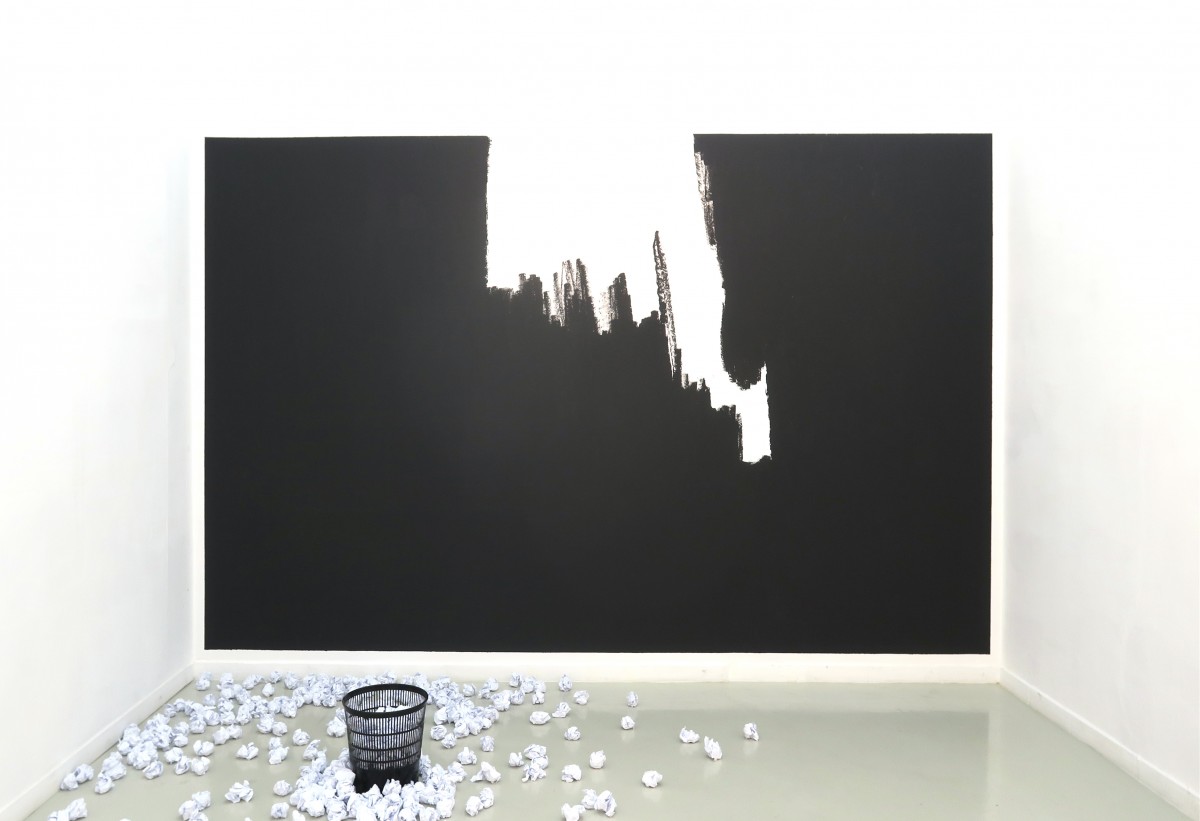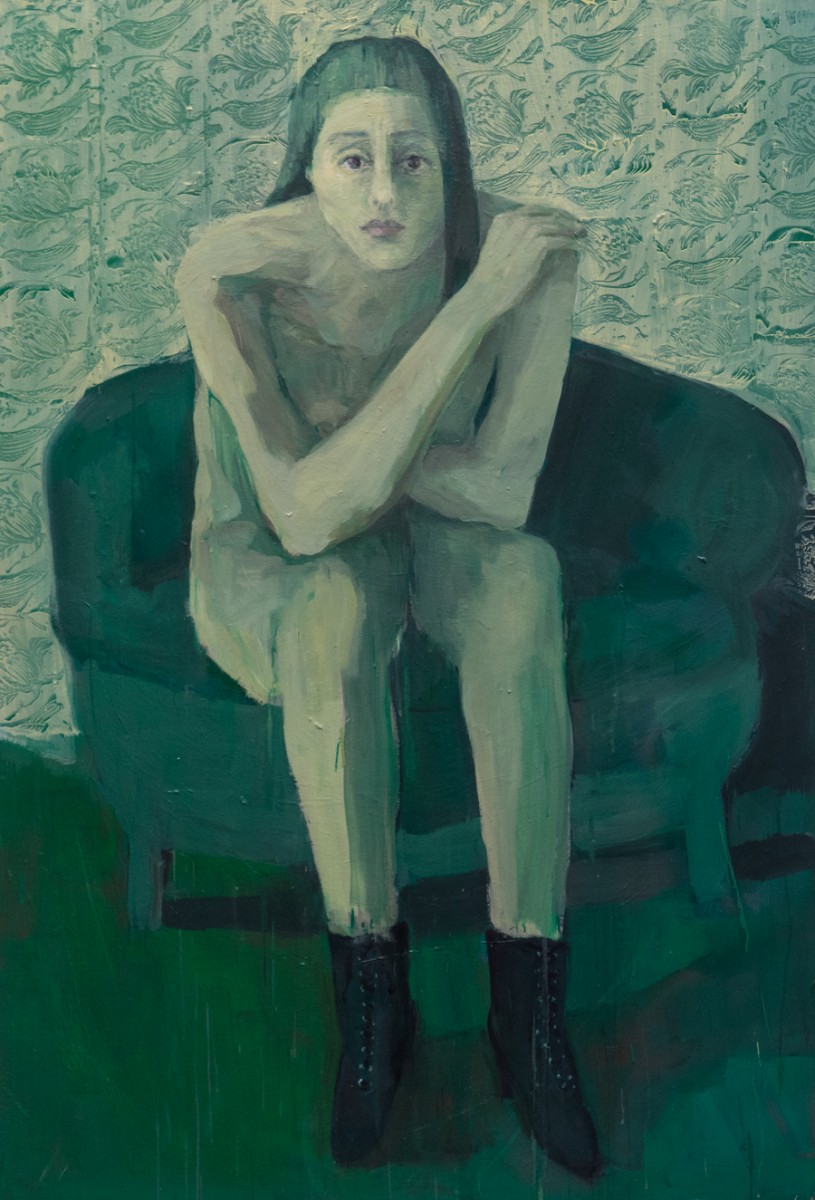[vc_row row_type=”row” use_row_as_full_screen_section=”no” type=”full_width” text_align=”left” background_animation=”none” css_animation=””][vc_column][vc_column_text] [/vc_column_text][vc_empty_space height=”60px”][/vc_column][/vc_row][vc_row row_type=”row” use_row_as_full_screen_section=”no” type=”full_width” text_align=”left” background_animation=”none” css_animation=””][vc_column][vc_column_text]
[/vc_column_text][vc_empty_space height=”60px”][/vc_column][/vc_row][vc_row row_type=”row” use_row_as_full_screen_section=”no” type=”full_width” text_align=”left” background_animation=”none” css_animation=””][vc_column][vc_column_text]
At the Eva Vautier Gallery, the exhibition Elémentaire ou la règle du jeu brings together Tom Barbagli, Charlie Chine, Jacqueline Gainon, Agnès Vitani and Anne-Laure Wuillai.
Practices ranging from immersive installation to figurative painting, from performance to the creation of conceptual objects.
Elementary is a challenge…[/vc_column_text][vc_separator type=”normal” border_style=””][/vc_column][/vc_row][vc_row row_type=”row” use_row_as_full_screen_section=”no” type=”full_width” text_align=”left” background_animation=”none” css_animation=””][vc_column][vc_empty_space height=”60px”][vc_column_text]
26/03/2017 to 03/06/2017
AGNES VITANI
 [/vc_column_text][vc_empty_space height=”60px”][/vc_column][/vc_row][vc_row row_type=”row” use_row_as_full_screen_section=”no” type=”full_width” text_align=”left” background_animation=”none” css_animation=””][vc_column][vc_column_text]Exhibition view “The state of things”, Agnès Vitani
[/vc_column_text][vc_empty_space height=”60px”][/vc_column][/vc_row][vc_row row_type=”row” use_row_as_full_screen_section=”no” type=”full_width” text_align=”left” background_animation=”none” css_animation=””][vc_column][vc_column_text]Exhibition view “The state of things”, Agnès Vitani
Agnès Grange Vitani’s “small business” collects and then treats by systematically dismantling out-of-use felt-tip pens.
She presents at Eva Vautier a set of pieces from her “workshops” and gives to see an installation that evokes the landscape:
-a cold, even icy part made of paper scraps, an attempt to approach the grandeur of the summits,
-A temperate zone, a sort of wasteland where the colored felts are deployed in different covering processes,
-cooled magmas and other pieces presented vertically tell us about extreme temperatures.
The paraphernalia of the walker, shoes and walking sticks, color kit and shelter attest to the proposal of circulation and plays with a traditional image of the landscape painter.
The pieces, from an era of overproduction and recycling remain on the scale of the workspace.
http://www.documentsdartistes.org/artistes/vitani/repro.html
[/vc_column_text][/vc_column][/vc_row][vc_row row_type=”row” use_row_as_full_screen_section=”no” type=”full_width” text_align=”left” background_animation=”none” css_animation=””][vc_column][vc_empty_space][vc_separator type=”normal” border_style=””][vc_column_text]
CHARLIE CHINE
[/vc_column_text][vc_empty_space][/vc_column][/vc_row][vc_row row_type=”row” use_row_as_full_screen_section=”no” type=”full_width” text_align=”left” background_animation=”none” css_animation=””][vc_column][vc_column_text]
“(…) A number of documents that belonged to Charlie Chine were found inside a wooden secretary purchased on May 27, 2010 in a yard sale located between rue Lassus, rue Delouvain and rue de la Villette in the 20th district of Paris.
This old piece of furniture, whose varnish was still visible in some places, was intended for my Parisian office, which was missing a support for writing.
Of Empire type with its flap covered with green felt, it had a number of small drawers all closed by delicious tarnished bronze locks. By playing with the small key kept until then, I managed to open two of them. The others remained closed until my curiosity was stronger than their seized locks.
It was therefore much later that I discovered what they could contain. So many diagrams, plans, sketches, ideas, correspondences reduced to a few essential sheets stuck jumbled in two black leather notebooks. After thinking for a long time about what I had just discovered, I decided to continue the work begun by this missing grandmother, probably born around 1880, whose whereabouts had been completely lost until then. (…) “
A graduate of the fine arts school of Aix en Provence and of the Villa Arson, Charlie Chine is interested in the question of auto-biographical narrative and in the different modes of writing fiction. Through studies, activities, stories or objects, she dissects thehabitus of modern man by questioning in particular the memory, collective and individual, the notion of common place or that of work or theactivity of wanting to make work.
[/vc_column_text][/vc_column][/vc_row][vc_row row_type=”row” use_row_as_full_screen_section=”no” type=”full_width” text_align=”left” background_animation=”none” css_animation=””][vc_column][vc_empty_space][vc_separator type=”normal” border_style=””][vc_column_text]
JACQUELINE GAINON
[/vc_column_text][vc_empty_space][/vc_column][/vc_row][vc_row row_type=”row” use_row_as_full_screen_section=”no” type=”full_width” text_align=”left” background_animation=”none” css_animation=””][vc_column][vc_column_text]
Jacqueline Gainon lives and works in Nice
Born in 1951, she did a year at the Beaux-Arts de Marseille in 1970, then stopped and went to travel, then a year at the Beaux-Arts de Paris in 1979, where she obtained her degree. She returns to Nice to make her first exhibition Confrontation in 1980 at Malabar and Cunégonde, and meets there the painters of the free figuration, Alberola, Blais, Combas, Di Rosa, Lanneau with whom she weaves links.
Jacqueline is a figurative painter and we can say iconoclast.
In a world where the image is king, does a painter only add a new image to this infinite sum which crosses us each day?
To the question “why paint? Jacqueline answers us not to make an image, that there are enough images, that she tries to make paint.
The images, the subject are pretexts and do not matter much, the stake is the painting itself, its questioning, the construction site that it produces.
The painting is the trajectory of the time spent painting, it opens the image and penetrates the different layers that are hidden in it.
Here begins the work of painting, progressing in the thickness of this time that never ceases to produce more questions that come, gesture after gesture, to settle and cover the image. To paint is to put the world in question.
Painting is something mysterious, she seems to repeat like a mantra. Painting is what starts from an image but does not belong to it anymore.
What presents itself to our eyes seems at the same time to have withdrawn, because what presents itself before our eyes is not an image, but an opening whose question it raises goes beyond the frame but questions ourselves and the surrounding world.
[/vc_column_text][/vc_column][/vc_row][vc_row row_type=”row” use_row_as_full_screen_section=”no” type=”full_width” text_align=”left” background_animation=”none” css_animation=””][vc_column][vc_empty_space][vc_separator type=”normal” border_style=””][vc_column_text]
ANNE-LAURE WUILLAI
[/vc_column_text][vc_empty_space][/vc_column][/vc_row][vc_row row_type=”row” use_row_as_full_screen_section=”no” type=”full_width” text_align=”left” background_animation=”none” css_animation=””][vc_column][vc_column_text]
Anne-Laure WUILLAI (born in Versailles in 1987) Education : ENS Cachan.
Graduate of the University of Quebec. Graduate of the Ecole Nationale Supérieure des Beaux-Arts de Paris.
Anne-Laure Wuillai deconstructs the daily structures that govern our lives: agendas, calendars, school notebooks, grids, schedules, etc., in order to give back its place to the human. The banal objects that she installs are as many challenges to our body, that is to say to what looks but is also looked at, to that which sees but does not see itself (except in a mirror). Playing with norms and the normative, she traces the paradox of our presence in the world, a presence torn between freedom and constraint, the self and the other.
Text by Michel Rémy
[/vc_column_text][/vc_column][/vc_row][vc_row row_type=”row” use_row_as_full_screen_section=”no” type=”full_width” text_align=”left” background_animation=”none” css_animation=””][vc_column][vc_empty_space][vc_separator type=”normal” border_style=””][vc_column_text]
TOM BARBAGLI
[/vc_column_text][vc_empty_space][/vc_column][/vc_row][vc_row row_type=”row” use_row_as_full_screen_section=”no” type=”full_width” text_align=”left” background_animation=”none” css_animation=””][vc_column][vc_column_text]
Tom Barbagli lives and works in Nice. A graduate of the Institut Supérieur de Design, he explores the connections and fractures between the world of design and that of art, militating to remove the edges and limits.
He engages in singular experiments, deviating the laws of physics by using utilitarian materials (motors, light-emitting diodes, hard disks) as well as natural materials (beeswax, solid wood, minerals). The ingenuity of mechanical assemblies creates dreamlike objects or immersive installations, akin to micro-phenomena.
Thus the objects he makes transmit ineffable cognitive data on the functioning of the consciousness and the surrounding world. And well beyond a visual perception, they lead to the awakening… awakening of the senses, awakening of the consciousness.[/vc_column_text][/vc_column][/vc_row][vc_row row_type=”row” use_row_as_full_screen_section=”no” type=”full_width” text_align=”left” background_animation=”none” css_animation=””][vc_column][vc_empty_space][vc_separator type=”normal” border_style=””][/vc_column][/vc_row]




